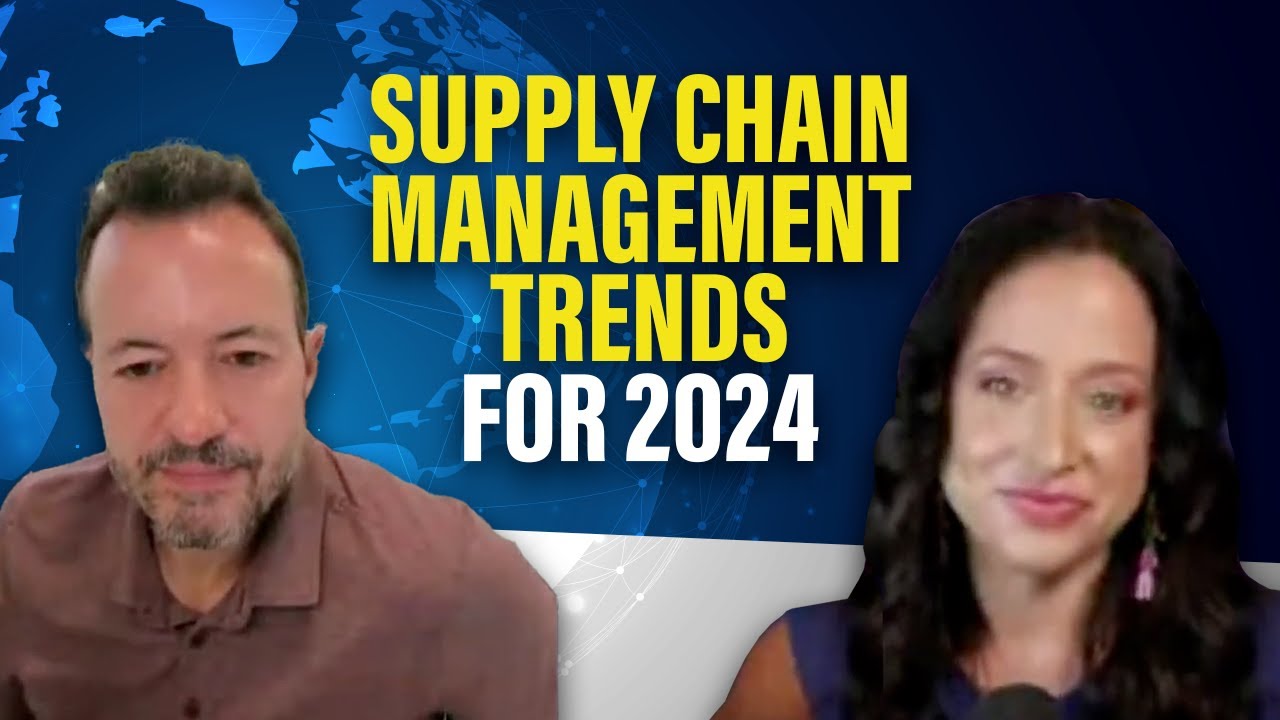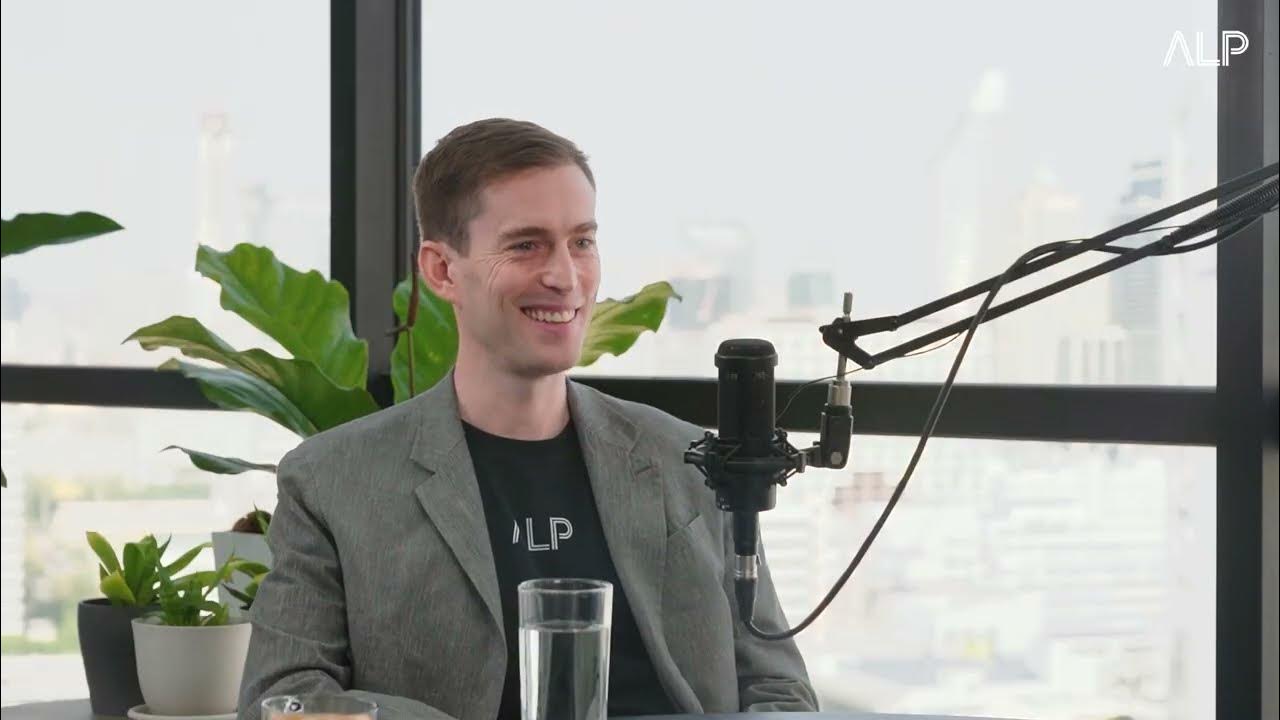Supply chain trends- What executive leaders expect in 2024
Summary
TLDR在这段对话中,来自不同领域的供应链专家讨论了2024年供应链管理的趋势和挑战。他们强调了可预测性、供应链的韧性、技术的重要性以及对可持续性的日益关注。讨论涵盖了从宏观经济挑战到地缘政治复杂性,再到气候变化对供应链的影响。专家们分享了他们对于如何利用人工智能和数字化转型来提高效率、降低成本和增强供应链透明度的见解。此外,他们还讨论了劳动力紧张、通货膨胀和成本上升等问题。最后,专家们为供应链管理者提供了建议,包括重视速度、灵活性、人才战略和跨部门合作,以应对未来一年的挑战。
Takeaways
- 📈 **供应链趋势**:2024年的供应链管理将面临多种趋势,包括宏观经济的疲软、持续的通货膨胀、债务成本上升、地缘政治环境的复杂化、去全球化、劳动力紧张、气候变化影响、对可持续性的重视以及技术复兴,特别是AI对数字化转型的影响。
- 🤝 **合作与信任**:建立和维护客户信任是供应链管理的关键,通过提高供应链的透明度和可预测性来实现。
- 💡 **技术与创新**:AI和数字化转型是供应链发展的重要驱动力,企业需要投资于这些技术以提高效率和响应市场变化。
- 🌐 **全球化与本地化**:企业正尝试将其供应链从中国等单一国家多元化,以减少风险并提高供应链的弹性。
- 📊 **数据与分析**:数据的积累和分析对于供应链管理至关重要,它帮助企业更好地预测需求、优化库存和改善运营效率。
- 🔄 **可持续性**:可持续发展成为消费者和企业越来越关注的焦点,供应链的可持续性目标需要与行业需求相匹配。
- 🚀 **敏捷性与速度**:在不断变化的市场环境中,敏捷性和速度是供应链管理的关键,企业需要快速适应市场变化并迅速做出决策。
- 📚 **人才与文化**:供应链管理的成功不仅取决于技术,还取决于人才和企业文化,需要有能力理解和应用先进技术的人才。
- 🔍 **预测与规划**:先进的预测技术和规划系统对于提高供应链的响应能力和减少库存积压至关重要。
- 🌱 **循环经济**:循环经济和产品的再利用是减少浪费和提高可持续性的重要途径。
- 🏆 **竞争优势**:那些能够有效利用AI和机器学习技术的公司将在竞争中获得优势,并实现更快的增长。
Q & A
2024年供应链管理的主要趋势是什么?
-2024年供应链管理的主要趋势包括对可预测性的需求增加、宏观经济增长的疲软、持续的通货膨胀、债务成本的上升、复杂化的地缘政治环境、去全球化趋势、劳动力紧张、气候变化的影响、对可持续性的持续关注以及AI和数字化转型对供应链的影响。
为什么供应链的可预测性在当前变得如此重要?
-可预测性之所以重要,是因为COVID-19疫情给供应链带来了不确定性,企业希望能够预测产品供应,以确保客户满意度和业务连续性。强大的供应链、更好的预测和建模技术以及技术的应用是实现可预测性的关键。
Peloton在2024年面临的主要供应链挑战是什么?
-Peloton面临的主要挑战包括更准确地预测需求、管理库存以及应对高利率环境下库存成本的增加。此外,还需要考虑将生产更近距离地转移到近岸地区以应对中国生产的问题。
Flex作为全球合同制造商,如何看待2024年的供应链趋势?
-Flex观察到一些大型行业的疲软,但同时也看到一些行业如医疗和汽车保持稳定。公司预计2024年将继续看到生产从中国转移到亚洲其他地区和北美的趋势。
在供应链管理中,AI和数字化转型如何提供竞争优势?
-AI和数字化转型可以通过提供更好的数据分析、预测和自动化流程来提高效率和响应速度。这些技术还可以帮助公司更好地理解和优化其供应链网络,从而在竞争激烈的市场中获得优势。
为什么人才和文化对于供应链的数字化转型至关重要?
-人才和文化对于数字化转型至关重要,因为技术解决方案需要有技能的人员来实施和管理。此外,一种开放和创新的企业文化可以鼓励员工接受新技术,并将其应用于解决实际业务问题。
供应链管理中,如何通过设计简化供应链并提高可持续性?
-通过设计简化供应链可以通过减少产品变种、使用更少的组件和简化组装过程来实现。这不仅可以降低库存管理的复杂性,还可以提高客户体验,并有助于提高产品的可持续性。
在供应链管理中,如何实现更好的库存管理?
-实现更好的库存管理需要结合先进的预测技术、与供应商和客户的紧密合作以及透明度和信息共享。此外,采用数字化工具和平台可以帮助实时监控库存水平,并快速响应市场变化。
为什么说供应链管理不再是传统的单一功能领域?
-供应链管理不再是传统的单一功能领域,因为它现在涉及到企业的各个方面,包括产品设计、营收规划、董事会决策等。供应链专业人员需要具备跨学科的知识和技能,以便在整个组织中进行有效的沟通和协作。
如何通过供应链管理应对不断变化的市场和客户需求?
-应对不断变化的市场和客户需求需要供应链管理具有高度的灵活性和敏捷性。这包括快速适应市场变化、利用数据分析来预测和塑造需求,以及与各方合作伙伴紧密合作以实现端到端的无缝连接。
在供应链管理中,如何实现更好的可持续性实践?
-实现更好的可持续性实践可以通过投资先进的规划系统、采用循环经济模式、减少废物产生、以及教育和培训员工关于可持续性的意识。此外,公司可以设定具体的可持续性目标,并将其整合到供应链的每个环节中。
Outlines

This section is available to paid users only. Please upgrade to access this part.
Upgrade NowMindmap

This section is available to paid users only. Please upgrade to access this part.
Upgrade NowKeywords

This section is available to paid users only. Please upgrade to access this part.
Upgrade NowHighlights

This section is available to paid users only. Please upgrade to access this part.
Upgrade NowTranscripts

This section is available to paid users only. Please upgrade to access this part.
Upgrade NowBrowse More Related Video

ASCM's Top Trends in Supply Chain for 2024

Supply Chain Management Trends for 2024 and Beyond

Supply Chain and S&OP Challenges in 2024

Bend but don’t break: Future-proofing the pharmaceutical supply chain

ALP Podcast Episode 1: Supply Chain & Logistics Challenges and Opportunities with Carl Hemus

Supply Chains 2022: Problems and Solutions
5.0 / 5 (0 votes)
